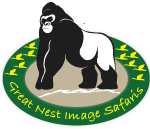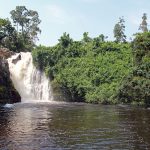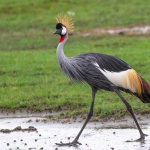Lion Tracking Experience | Uganda Parks
Lion Tracking Experience | Uganda Parks
Lion Tracking Experience | Uganda Parks : this basically involves one taking a close look at lions and learning their behavior. Here, lions with radio callers are tracked by a researcher assigned by the Uganda carnivore project-under the research department of Uganda Wildlife authority. They use the radiation trackers to monitor the movement of the lions with the radio callers. This activity involves learning much more about the habits of the king of the wild in natural plains of Kasenyi. In Uganda is is done within the national park and it is one of the most interesting experimental tourism activities.
![]()
Charges for this experience in Queen Elizabeth National Park
The coast of a lion permit authorized by Uganda Wildlife Authority is US$100 for international tourists and UGX 100,000 for the East African Community. On this amount US$10, is paid to the Uganda carnivores’ project which is responsible for the conservation of the lions in Queen Elizabeth National Park. It is also inclusive of the park entrance fee to Queen Elizabeth National Park. However, limited numbers of participants are allowed to a natural habitat. This means if you are to join the team, you have to book in advance in order to spare a place. Generally, this activity lasts for 2-3 days and only twice a day; in the morning 8am and late afternoon.
Why is a limited number of participants needed in the lion tracking experience?
This is not like any other game viewing activity but it’s a research. So for the research to go on right or for research purposes a limited number of participants are permitted to engage. Another reason is to avoid stressing the animals whereby lions in Queen Elizabeth National Park are not familiar to humans. As a result, the big number can stress them and this is truly dangerous for the sustainability of the eco system. Also a limited number helps to heighten your experience during the lion tracking activity. If you are few for the activity, you can all get a chance to capture clear pictures.
How is lion tracking activity carried out?
Being time conscious is basically an awesome start on the lion tracking activity. In fact, this activity technically should start in the morning at around 8am. The tracking of lions is done by researchers using radio callers and radiation locators to find where they are hiding. The lions move in the groups of 3-25 individuals and these groups are called Prides. However, the number of lions increases during the tracking activity.
Therefore, it’s ideal to keep or note down the number seen first to avoid confusion. It is also good to take note of the different signs that help locate the lions. For example, the nocturnal vocalizations as well as the hyenas as they laugh and any other unusual distressing call for prey. You should also take note of the bent grass in the plains since it might help you know the direction where the lion has moved. There is 95% chance that if you do all this, you can see lions in savannah plains in Queen Elizabeth National Park.
Do lions in Queen Elizabeth National Park behave different from any other lions in the World?
Lions in Queen Elizabeth National Park are tree climbing lions. Therefore the lions in Ishasha are spotted lazily hanging up in the candelabra tree branches and sycamore trees. These lions are territorial, meaning, they make territories and they have to respect this rule. Otherwise, the worst can happen between two males of different prides. This is the reason why they are called the king of the jungle since two kings cannot rule one kingdom.









Leave a Reply
Want to join the discussion?Feel free to contribute!